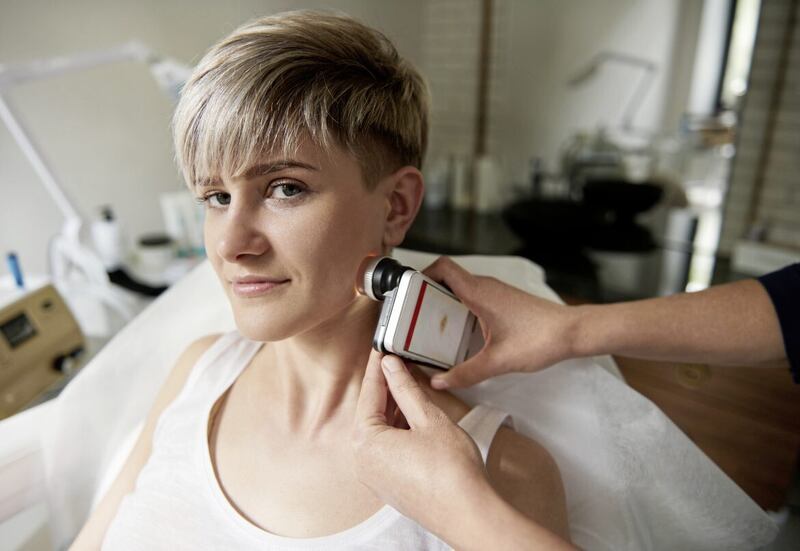A new treatment – where a hand-held probe that emits microwaves is placed above the skin – is being trialled as a way of tackling actinic keratosis, sun-related damage that affects exposed parts of the body such as the face, back of the hands and scalp.
Actinic keratosis takes the form of small, scaly spots or keratoses, which are often rough to the touch and typically measure 1cm to 2cm in diameter, though they can be much larger.
Keratoses are extremely common after the age of 60 and, while most don’t become problematic, up to 2 per cent develop into squamous cell carcinoma, the most common type of skin cancer.
If left untreated, squamous cell carcinoma can in time spread to other parts of the body.
Treatments such as creams containing 5-fluorouracil (a form of chemotherapy) and diclofenac (an anti-inflammatory drug) can be effective, but they can also cause itchiness and make the skin sore.
Another option is freezing the lesion with liquid nitrogen to remove it. This, too, can be painful and may lead to a loss of natural skin colouring; there is also a small risk of scarring. Surgery can also leave a scar. The new treatment, developed by UK-based Emblation and on trial in Germany and the US, removes the keratosis but with a lower risk of scarring.
A probe is attached to a generator that emits the electromagnetic microwaves – this stimulates water molecules in the lesion, which raises the temperature and destroys the tissue.
Using the hand-held probe ensures the treatment is targeted at the keratosis only. The probe delivers microwave energy – 300 times less powerful than a microwave oven – to an area of up to 6mm in diameter and 3mm in depth.
Several treatments may be needed for larger areas. Results from a small study, reported in the British Journal of Dermatology in 2020, showed the treatment to be effective in 90 per cent of cases.
Researchers at Dundee University tested the treatment on 11 people with nearly 200 keratoses between them: 93 were treated with the microwave therapy and 86 left untreated.
Keratosis can disappear naturally and the trial results show that those treated with microwaves were 154 times more likely to disappear.

In the new trial at Miami Dermatology and Laser Institute, in the US, and Centroderm centre in Germany, 60 patients will be given the microwave treatment in three-second bursts, with three bursts, 20 seconds apart, for each keratosis. The effects will be monitored for 12 months.
Commenting on the technique, Dr Bav Shergill, a consultant dermatologist at Queen Victoria Hospital in East Grinstead, West Sussex, said: "Actinic keratoses are a sign of sun damage and are associated with an increased risk of developing skin cancers.
"There are a range of effective treatments available but any new options that are simple to use without side-effects are to be welcomed.
"This microwave technology is a fascinating new option and I look forward to the final trial data."
© Solo dmg media






